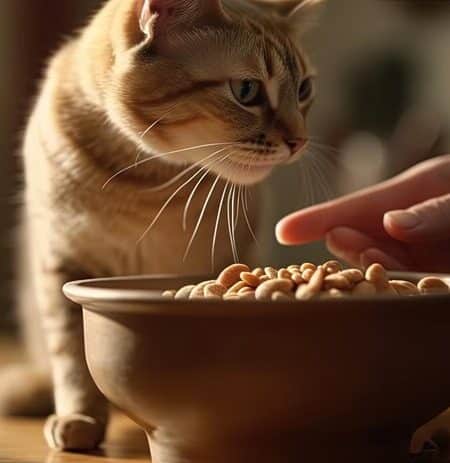How often to feed a cat wet food in a day
As a responsible cat owner,it is very important how often to feed a cat wet food ensuring your feline friend receives the right nutrition is paramount. One common dilemma faced by owners revolves around determining the ideal quantity of wet food to feed their beloved pets. In this comprehensive guide, we’ll explore the factors influencing the perfect portion size, debunk common misconceptions, and provide practical tips for crafting a well-balanced diet for your furry companion.
Understanding how much wet Cat Nutrition in wet food
Prior to diving into the particulars of wet food portions, it is essential to completely understand the nutritional requirements of our feline companions.”Cats are obligate carnivores, meaning their diet primarily consists of meat. This inherent need for animal-based protein underscores the importance of selecting high-quality wet food that aligns with their biological requirements.
Tailoring Portions to Individual Cats
Every cat is unique, and various factors influence their dietary needs. Age, weight, activity level, and health status all play pivotal roles in determining the appropriate portion size. For Example, Kittens, require more frequent and smaller meals compared to their adult counterparts. Likewise, a senior cat with a less active lifestyle may benefit from controlled portion sizes to prevent weight-related health issues.
Decoding Wet Food Labels
Choosing the right wet food involves more than just grabbing a can off the shelf. Careful examination of ingredient lists, nutritional information, and feeding guidelines on the packaging is essential. Look for products that list a high percentage of meat content and avoid those with excessive fillers or artificial additives.
Calculating Daily Caloric Requirements
To ascertain the correct portion size, it’s beneficial to calculate your cat’s daily caloric requirements and this involves considering factors such as metabolic rate and energy expenditure. Online calculators and consultations with your veterinarian can aid in determining the optimal caloric intake for your cat’s specific needs.
Establishing a Feeding Schedule
Consistency is key when it comes to feeding your cat. Establishing a regular feeding schedule not only provides structure for your pet but also aids in weight management. Dividing the daily portion into multiple meals can prevent overeating and promote a healthier eating routine.
Addressing Common Concerns
1. Weight Management
As ,Wet food can be a valuable ally in managing your cat’s weight. Its higher moisture content often results in a lower calorie density, making it an excellent option for cats prone to obesity. However, it’s crucial to monitor portion sizes to achieve the desired balance.
2. Hydration
One often-overlooked benefit of wet food is its contribution to hydration.Thats why, Cats are notorious for being indifferent to water consumption, and incorporating wet food into their diet ensures they receive additional moisture, promoting kidney health and preventing urinary issues.
3. Dietary Adjustments
Life circumstances, such as pregnancy or illness, may necessitate adjustments to your cat’s diet. Consultation with a veterinarian during such periods is vital to tailor the wet food portions to meet specific requirements.
Conclusion
In sum up, In the intricate world of feline nutrition, understanding how much food to feed your cat is a nuanced process. By considering individual factors, deciphering food labels, and adhering to a consistent feeding schedule, you can provide your cat with a diet that not only satisfies their taste buds but also promotes overall health and well-being. Remember, the key lies in treating your feline companion as the unique individual they are, tailoring their meals to meet their distinct needs and preferences.
Subscribe to our email newsletter to get the latest posts delivered right to your email.



Comments